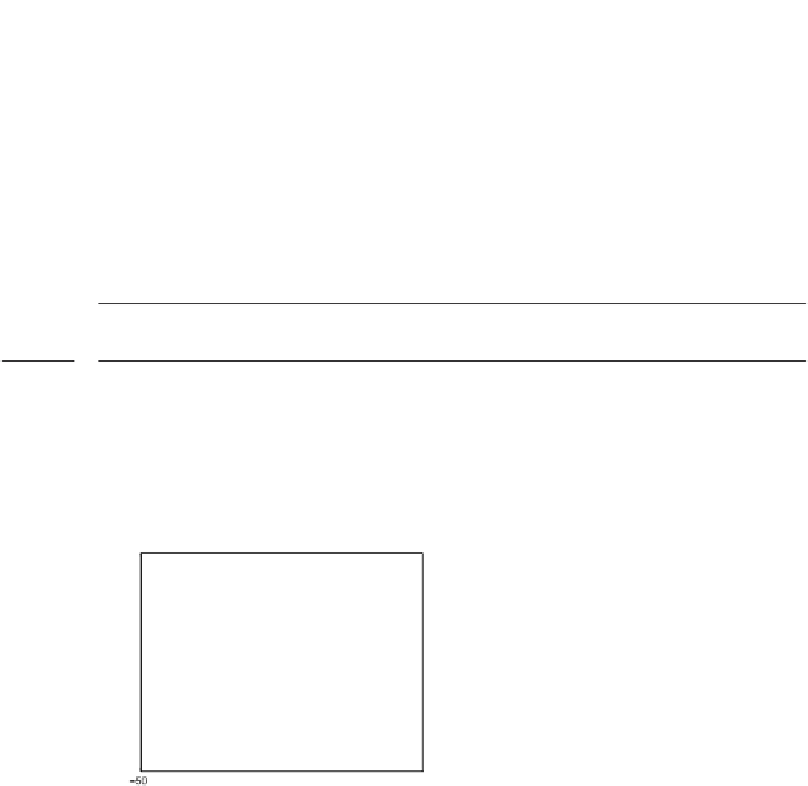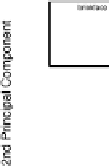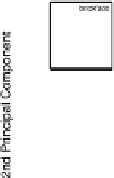Graphics Reference
In-Depth Information
the class variable. PCA and KPCA using both the polynomial kernel and the Gaus-
sian kernel are carried out on all of the input measurements. In Figs.
.
-
.
, the
circles and dots denote positive and negative samples, respectively. Figure
.
shows
thedata scatter projectedonto thesubspacespannedbythefirstthree principal com-
ponents produced by the classical PCA. Similarly, Fig.
.
shows plots of data scat-
ter projected onto the subspace spanned by the first three principal components ob-
tained byKPCAusing apolynomial kernel of degree
and scale parameter
.Figures
.
a-c are pictures of projections onto the principal component space produced by
Gaussian kernels with σ
, respectively. If we compare Fig.
.
(obtained using PCA) with the other plots, it is clear that KPCA provides some extra
information about the data that cannot be obtained through classical PCA.
=
,
and
Example 7
Inthethirdseries(Fig.
.
),weapplyPCAKPCAtothe“imagesegmen-
tation” data set (also from the UCI Machine Learning data archives), which consists
of
data points(eachwith
attributes) thatareclassifiedintosevenclasses.KPCA
with the RBF gives better class separation than PCA, as can be seen in (a
) & (b
).
When all seven classes are plotted in one graph, it is hard to determine the effect of
7
Figure
.
.
Results from applying PCA and KPCA to the “image segmentation” data set. A limited
number of outliers have been omitted in the figures




















































































































































